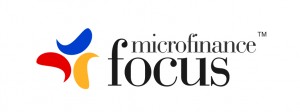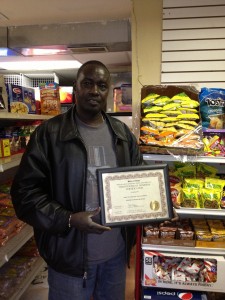A tryst with microfinance in the Midwest
Microfinance Focus, 23 April 2013: From a Southern comfort restaurant to an African grocery shop tucked away in a suburb of Des Moines – micro-enterprises are thriving in pockets of the American Midwest. Grameen-style peer groups and low-denomination micro-loans are now also slowly making headway in the US, which has one of the most sophisticated financial systems in the world. Development organisations, for their part, are equipping potential micro-entrepreneurs from minority groups such as women, African-Americans, Latinos and other immigrants with appropriate skill sets.
“Vibrant micro-enterprises are still needed for strengthening the economy of Midwestern states like Iowa,” pointed out Amelia Lobo, the Director of the Women’s Business Center at the ISED Ventures (ISED), an organisation, which trains micro-entrepreneurs and also implements asset building strategies for low-income communities.
Microfinance is not a novel concept in the US, which has been home to solidarity groups since the 1970s. Noting that there are over 300 micro-lenders in the US, Amelia Lobo explained, “Micro-loans in the US resemble the bank loans of developing countries in terms of size, as the capital requirements are much larger.”
Businesses employing five or fewer employees are categorised as micro-enterprises under the purview of the Association for Enterprise Opportunity (however, businesses with a headcount of up to 10 can also be considered micro-enterprises).Micro-loans are of denominations up to $50,000 and are disbursed on an individual basis (the average microloan size is $13,000), while small business loans are not higher than $100,000.
Commercial funding from private sector institutions is yet to trickle into the Iowan microfinance sector. Players such as Iowa Microloan Foundation obtain loan capital from government relending programs and operating capital from private foundations. The microfinance sector is still niche and it does not have a high outreach in the Midwest.
Despite the fact that over 80 per cent of the businesses are micro-enterprises in the US (as per the Association for Enterprise Opportunity’s estimates in 2013), immigrant entrepreneurs have immense scope to tap markets in predominantly agricultural states such as Iowa. “Immigrants and local communities can fill in vacant retail space in Iowa. If you visit towns in rural Iowa, you realize that there is a genuine need for small retail outlets. People end up commuting for 40 minutes just to fetch groceries,” said Michael Tramontina, the President of ISED Ventures.
In the midst of recession, widespread layoffs generally give rise to self-employment, which in turn may spur the demand for low-cost credit. Mark Edelman, the founder of the Iowa Microloan Foundation and an economics professor at Iowa State University, reasoned that “more microfinance is required in the wake of the global credit crisis, as the under-writing of conventional loans becomes more restrictive.”
Micro-entrepreneurship – The Midwestern way
ISED Ventures imparts business skills to low-income groups, minorities and immigrants. Workshops are conducted to assess whether participants have the required acumen to succeed in setting up businesses and a series of classes are held to teach the basics of business planning, finance and marketing.
In order to tap entrepreneurial talent within the Latino community, ISED has launched a program called Emprendadores Latinos De Iowa (Latino Entrepreneurs of Iowa.) The program, which is taught in both English and Spanish, has been specifically developed for Latinos living in remote rural areas of Eastern Iowa, who often struggle to keep their businesses afloat.
Latino business owners are usually first-generation entrepreneurs in Iowa and hence, they require more technical assistance. While ISED is not a micro-lender, the organization enables its clients to avail of micro-loans from partners such as the Small Business Administration, State of Iowa Targeted Small Business Loan Funds and the Iowa MicroLoan Foundation.
Stories of Emerging Micro-enterprises
Entrepreneurs have benefitted from capacity building initiatives of organizations such as ISED. Take for instance, the case of Pam Patton, an African-American restaurant owner. She previously divided time between her corporate career and her catering business “Southern Drawl Catering Services.” After deciding to take a plunge as a full-time restaurateur, Pam realized that she needed guidance to write a business plan and she turned to ISED.
“At that time, the economy was in deep recession. Banks were clamping down on funds allocated for restaurants, many of which were failing,” she recalled.
In spite of having a flawless personal credit history, major banks turned down her loan application. Eventually, ISED apprised Pam of a small business program through which micro-loans were disbursed. After undergoing training at ISED, Pam perfected her business plan with cash flow projections and she could also obtain a $30,000 loan. Although Pam was already armed with a post-graduate degree in human resource management, she needed guidance for “generating capital consistently.” Now, this feisty micro-entrepreneur has seven employees on board and she has also entered into catering contracts with the US military.
Not all ISED micro-entrepreneurs have had corporate jobs to fall back on and some immigrant clients had stories of endurance to tell. Marow, a South Sudanese immigrant, is striving to scale up his “African Grocery and Clothing Store” in Des Moines. After getting displaced from South to North Sudan in midst of strife, Marow fled to Egypt, where he set up a hair salon. After moving to Iowa, Marow approached ISED to hone his business skills. “I tried to start over again as a businessman,” said Marow.
He saved $2,000 which was matched with a grant through a savings program at ISED and he set up a grocery store. But that was not the end of his financial woes. His fledgling store was burgled and he lost his inventories. Marow is now juggling a part-time job along with a newly opened African grocery store and he is trying to avail of a $5000-microloan. Calling for a greater thrust on micro-loans of a smaller denomination for low-income groups in the Midwest, Michael Tramonita, the President of ISED, observed, “Immigrants still tend to borrow informally from their respective families and communities.”
Grameen in the Corn Fields
Grameen joint liability groups, which have mushroomed in several credit markets, are now finding resonance in some parts of the US. Group-based micro-lending models are known to thrive in communities with strong social and cultural ties in developing countries. A few projects are in the pipeline to make the Grameen model replicable in the American milieu.
Grameen America, which already runs peer-lending operations in New York City, has now expanded into other states, including Nebraska (a neighbouring state of Iowa). Joint liability group members in Omaha hail from Mexican and other Central American communities. Just like a regular Grameen replicator, each group consists of five members and loan officers are deputed to collect loan repayment on a weekly basis. Loans in a denomination of $500-$6000 are given to each group member for a period of one year or six months at a flat weekly fee which computes to an annual interest rate of 9% -10%. In place of physical collateral, peer pressure is used to lower default rates. The program has been successful so far with a repayment rate of 99%.
Iowa Community Capital plans to roll out a Grameen-based lending program for well-knit immigrant communities in Des Moines. “There is definitely a demand for micro-loans below $5000 among low-income groups,” said Michael Tramontina of ISED, which plans to advocate the Grameen program among clients.
About 8.2% of US households are still unbanked, according to a Federal Deposit Insurance Corporation study conducted in 2011. While this indicates that there is market potential for promoting microfinance, Grameen replicators would have to ascertain how group-based lending can be popularized in a highly individualistic American society.
References:
http://www.sba.gov/content/microloan-program
http://www.fdic.gov/householdsurvey/




A good article to know about the potential of microfinance in US.